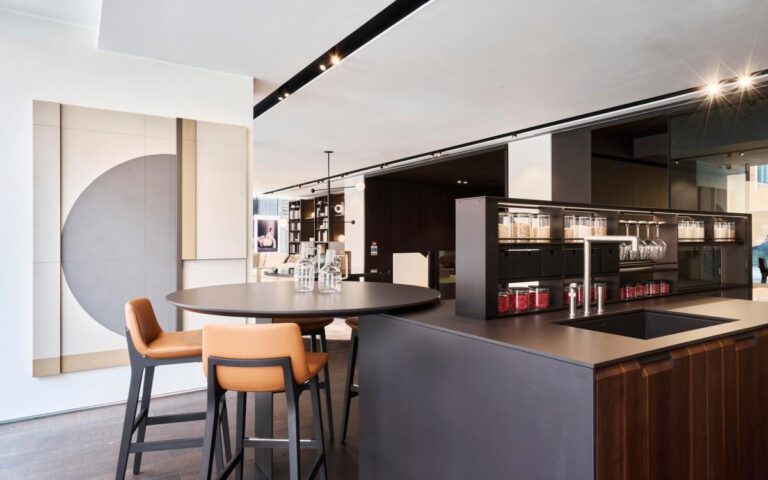Courteney Cox's recent Instagram posts make it clear that she's pretty proud of the kitchen at her Malibu waterfront mansion. Who could blame her? There's no culinary clutter here, just a gorgeous blonde wood cabinet with full-height sliding doors that runs the length of the wall, behind which all the tools of a busy kitchen are hidden. If she wasn't filming her cooking videos so often here, you might be forgiven for thinking she might be in a high-end boutique. This is, as you know, the “invisible” kitchen. You will be happy to hear that there is a way to create a kitchen without requiring a first-class budget – although it helps.
“We're seeing more and more hidden kitchens,” says Sophia Bühn Strand, founder of London-based Swedish design brand Sola Kitchens. “People want a kitchen, but they don't want it to look like a kitchen, because it's usually open plan. They want the kitchen to disappear into the room.” Sola's Invisible options include a floor-level kick drawer that hides a pet food bowl, an integrated tea towel hanger, and a remote control pop-up spice rack hidden in the stovetop, adding to the usual visual appeal of a well-worn kitchen. Eliminate all clues. For the minimalists among us, this is a welcome relief from the cottagecore trend where literally the last cup and saucer is displayed on an open shelf or dresser.
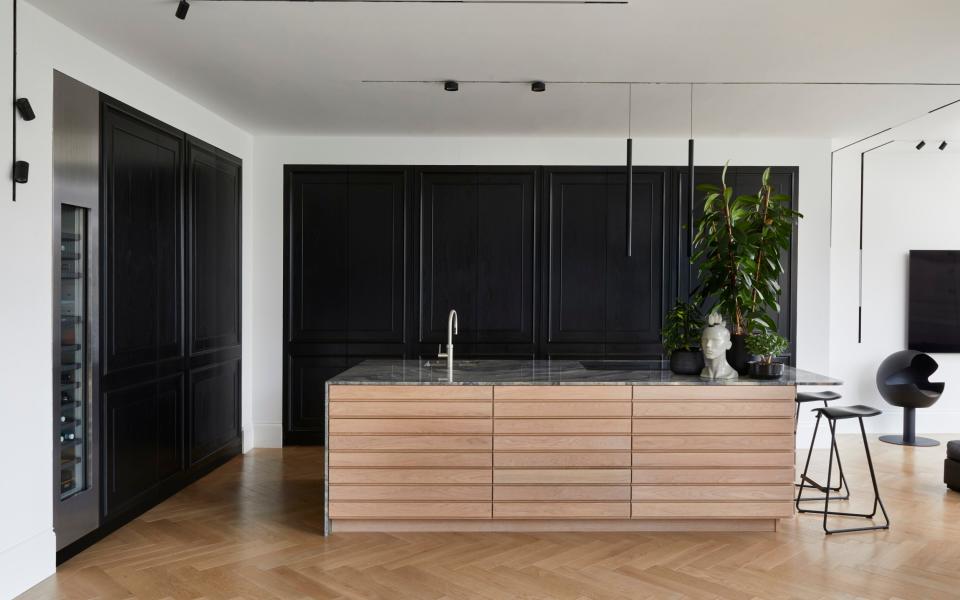

A major solution to the “kitchen without a kitchen” is a pocket door system. Conceal up to 10 feet of kitchen space when you're done cooking and the dinner party is in full swing. The entire kitchen operation is behind this, including the oven, sink, appliances, and worktop clutter. Finally, it is possible to close the door even in the open plan living room. However, pocket doors are expensive. Luxury kitchen fitter Mr Robthorpe of Studio 35 York estimates it will cost around £12,000 (his company uses his Next125 door system). “However, the engineering behind it is amazing,” he adds. We also recommend the Hawa and Sora doors.
In fact, you can blow your budget on invisible kitchen gadgets, but it's not as “The Emperor's New Clothes” as you might think. Designed by Norbert Wangen, Boffi's 'Slide and Hide' K series (including a built-in sliding worktop that opens to reveal the sink/hob below) means you can literally put a lid on your washing machine or cookware. can. Inspired by a carpenter's toolbox, his Bulthaup freestanding B2 cabinet hides cutlery, oven, dishwasher, refrigerator and food storage all behind huge oak or walnut doors. Masu.


Or consider an “invisible induction” cooktop (made by Marazzi, Sola, or Invisacook). In this case, there is no actual evidence of a stove as the heating element is hidden under the stone veneer that covers the entire island. The pot is placed directly on the stone. Everyone raves about Borla's downdraft exhaust system, which is integrated into the stove. “It eliminates the need for an overhead hood, which is a real bonus in the kitchen,” says Simon Ribchester, head of design at renovation firm Beams. But the real status symbol of the invisible kitchen is the “Narnia pantry'', “when you open the cabinet door,'' “and it's a hidden utility room with storage, an extra sink, a dishwasher, etc.'' , where you can get rid of everything if you enjoy it.”
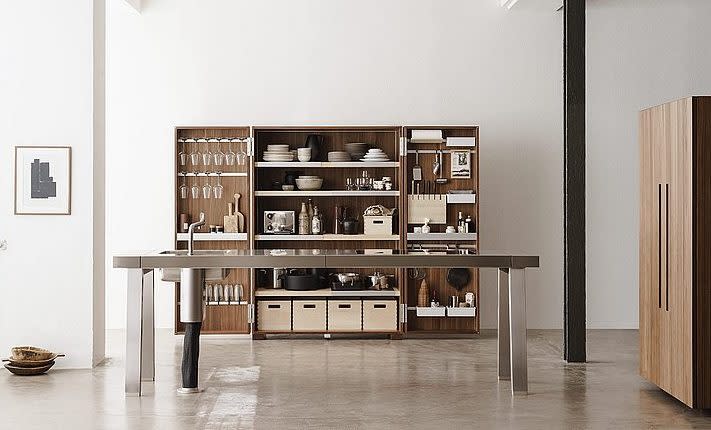

For the other half of us, there are plenty of affordable hacks and smart investments that can “de-kitchen” your space. The invisible kitchen is more than just a luxury proposition. After all, most of us need our kitchens to be more than just a room for cooking and to work hard. Besides, who wouldn't want to get away from it all if they could? Mike Shaw of Procter & Shaw Architects says the idea is essentially to “strip down the character of the kitchen and make it easier to identify.”
If a renovation is in the plan, he suggests removing the over-the-counter cabinets (which immediately tell you the room is a kitchen) and replacing them with, say, a shelf for plants (but not the under-counter cabinets). (provided there is enough storage space for the plants). You may not want to see the mess in your kitchen). And perhaps the kitchen island could resemble a table, he added. “It blends better into the living space.” The Marylebone apartment will also consider “rich” materials not normally used in kitchens, such as Mike's disguised cupboards and the fridge-freezer behind panels made of thick Douglas fir batten.
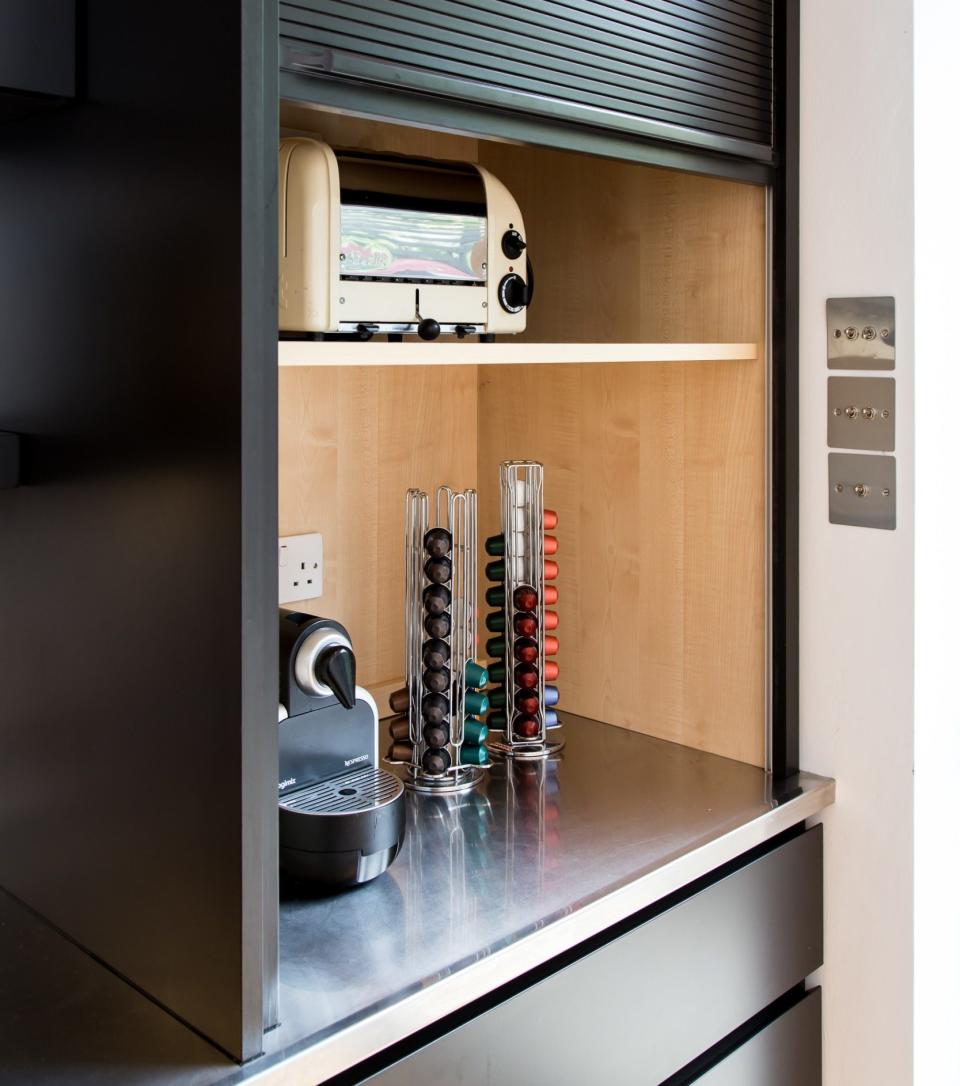

Or hide almost all your kitchen equipment behind Courteney Cox-style floor-to-ceiling cabinets. “Make an entire wall full of cabinetry,” advises Ribchester. “Anything on the surface can be removed and incorporated into the wall, and the rest of the room can be decorated and playful.”
“Choose a push-touch opening mechanism without handles so the cabinet blends into the background,” he added. Similarly, you can match the cabinets to the floor. ” If possible, make the woodwork larger. The larger the door, the fewer joints there will be. In other words, “We want it to look as simple as possible so it's not too hard on the eyes,” explains Thorp. He adds that you can also completely hide a black oven by installing black cabinets (he's probably one of the reasons why black kitchens are trending right now). Also, if you can't afford cabinets, matching the wall paint to the cabinet color can soften the visual separation.
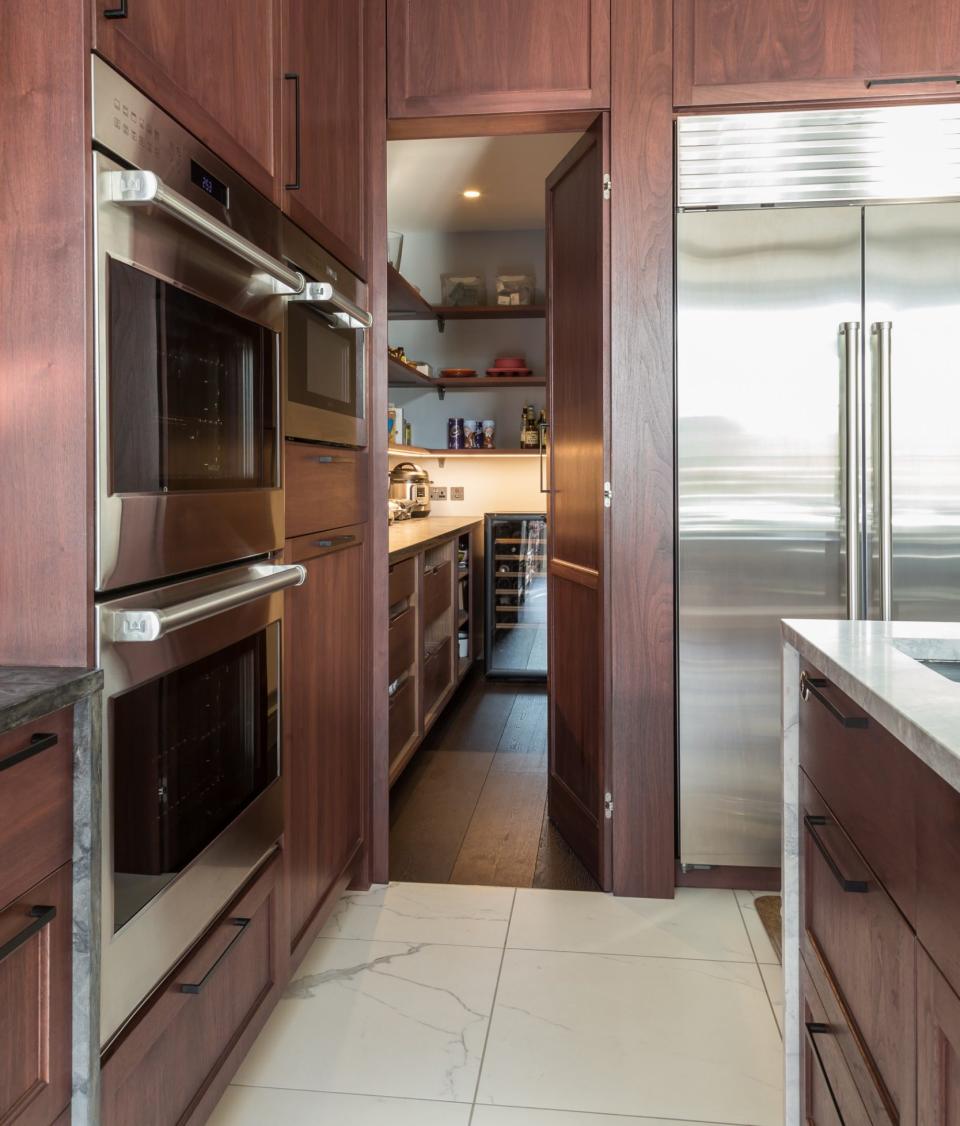

A cheaper alternative to a completely invisible kitchen is to build a hidden larder/breakfast station, says Kent-based designer Amanda Neilson. “If you have a hidden pantry, everything you need for breakfast is there. The coffee machine, toaster, food and a small worktop are all behind bifold doors or pocket doors.” In addition to hiding much of what's inside, “it enhances the overall feel of the space,” she says. If a pocket door is beyond your budget, Neilson suggests a less expensive tambour door, where the slats roll up into recesses.
Ribchester recommends taking “from the aesthetic language of the living space to reduce visual noise in the kitchen.” Sometimes it's a major renovation, sometimes it's just a small swap. Perhaps there's room for freestanding furniture, or even “an armchair, table lamp, and art for a reading corner to sit and look up recipes,” Neilson suggests.


Of course, that hard work doesn't cost money, but it's “a lot of work to get the amount of pots and pans you need,” Nielson said, and aside from the daily grind of editorial work. We advise our clients to store it in their cupboard. (Ideally in your Narnia pantry). But perhaps the cheapest and best trick is to remember to turn off the lights when you're not using the kitchen, Thorpe says, “so you don't have to look into the area.”
Broaden your horizons with award-winning British journalism. Try The Telegraph for free for 3 months. Get unlimited access to award-winning websites, exclusive apps, savings and more.


